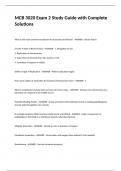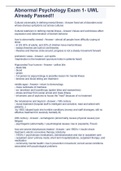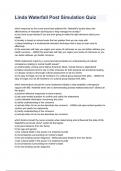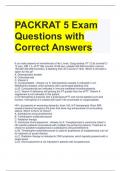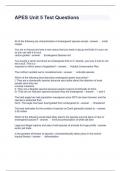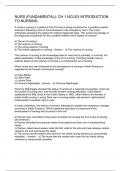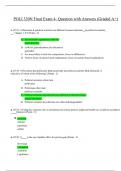Exam (elaborations)
MCB 3020 Exam 2 Study Guide with Complete Solutions
- Course
- Institution
MCB 3020 Exam 2 Study Guide with Complete SolutionsMCB 3020 Exam 2 Study Guide with Complete SolutionsMCB 3020 Exam 2 Study Guide with Complete SolutionsMCB 3020 Exam 2 Study Guide with Complete SolutionsMCB 3020 Exam 2 Study Guide with Complete Solutions What is the most common mechanism for ba...
[Show more]
